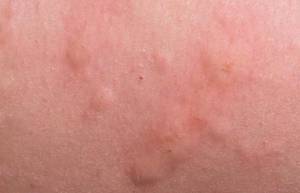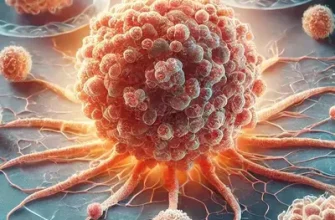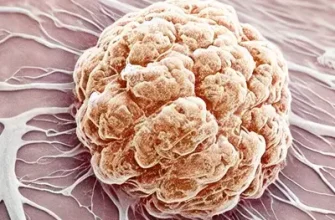Have you ever noticed discharge from your nipple and wondered if it’s something you should worry about? Nipple discharge can be alarming, but it’s also surprisingly common.
What Exactly Is Nipple Discharge?
Nipple discharge refers to any fluid that comes out of the nipple, either spontaneously or when squeezed. It can vary in color, texture, and quantity. Sometimes, it’s totally benign and just a natural part of your body’s processes. Other times, it could signal an underlying issue that requires attention.
There are multiple types of nipple discharge: clear, milky, yellow, green, or even bloody. Each type can provide a clue as to why it’s happening. For example, milky discharge is often related to hormonal changes, while bloody discharge may indicate something more serious, such as an underlying ductal issue.
Did You Know?
Nipple discharge affects approximately 5-7% of women at some point in their lives, and in most cases, it’s not linked to breast cancer (source). However, understanding the context of this discharge is crucial for your peace of mind.
What Causes Breast and Nipple Discharge?
Types of Nipple Discharge and Their Frequency
| Type of Discharge | Frequency (%) |
|---|---|
| Milky | 40% |
| Clear | 25% |
| Bloody | 15% |
| Yellow | 10% |
| Green | 10% |
This histogram shows the frequency of different types of nipple discharge. Milky discharge is the most common, while green and yellow are less frequent.
There are several possible causes for nipple discharge, ranging from entirely benign to more concerning conditions. Here are some common causes:
- Hormonal Changes: Hormones play a major role in breast health. Elevated levels of prolactin, which can be stimulated by stress, medication, or even an underactive thyroid, may cause milky nipple discharge.
- Duct Ectasia: As we age, changes in the milk ducts can cause them to become wider and fill with fluid, resulting in a green or yellow discharge. This is a common cause among women in their 40s and 50s.
- Papillomas: These benign growths inside the milk ducts can cause a discharge, often bloody. While papillomas are usually not cancerous, they can sometimes cause discomfort.
- Breast Infections (Mastitis): Mastitis is often associated with breastfeeding, but it can also affect non-lactating women. Infections can lead to nipple discharge, which may be accompanied by pain, redness, and swelling.
- Breast Cancer: Although rare, nipple discharge can be an early sign of breast cancer, particularly if it is bloody or occurs without squeezing the nipple. If the discharge is persistent, occurs from one breast only, or is accompanied by a lump, it’s essential to seek medical advice.
Table: Common Causes of Nipple Discharge and Their Characteristics
| Cause | Type of Discharge | Common Symptoms |
|---|---|---|
| Hormonal Changes | Milky | Spontaneous, often both sides |
| Duct Ectasia | Green or Yellow | Thick discharge, more common with age |
| Papillomas | Bloody | Often from one duct, may feel lump |
| Mastitis | Yellow or Green, sometimes Pus | Pain, swelling, redness |
| Breast Cancer | Bloody or Clear | Unilateral, may be accompanied by a lump |
How Can You Tell If It’s Something Serious?
The type of discharge can be a strong indicator of whether you need to worry. For example, milky discharge is often linked to hormonal shifts and can be totally normal, especially if you’ve recently been pregnant or are taking certain medications. On the other hand, bloody or clear discharge, particularly from one breast, is more concerning and warrants medical evaluation.
Did You Know?
According to the American Cancer Society, about 10% of women with nipple discharge may have an underlying malignant condition, but the majority of cases turn out to be benign (source). Early detection is key, which is why it’s important not to ignore persistent symptoms.
Is Nipple Discharge Always Linked to Cancer?
Not at all. Most nipple discharge is not caused by cancer. In fact, one study found that fewer than 10% of women with nipple discharge had breast cancer. But this doesn’t mean you should ignore it. If the discharge is spontaneous (i.e., without squeezing), bloody, or occurs on only one side, it’s wise to get checked by a healthcare provider.
Type of Discharge and Number of Breast Cancer Cases
| Type of Discharge | Number of Breast Cancer Cases (%) |
|---|---|
| Bloody | 60% |
| Clear | 30% |
| Milky | 5% |
| Yellow | 3% |
| Green | 2% |
This histogram shows the percentage of breast cancer cases associated with different types of nipple discharge. Bloody discharge is most often linked with breast cancer, while green and yellow discharges have a much lower correlation.
What Should You Do If You Notice Nipple Discharge?
If you notice any discharge, start by making some observations:
- When Does It Occur? Is it spontaneous, or does it happen only when you squeeze?
- What Does It Look Like? Take note of the color and consistency. Milky or yellow may not be alarming, but bloody or clear discharge can be.
- How Long Has It Been Happening? Discharge that is persistent or getting worse over time should be evaluated.
Tips for Managing Nipple Discharge
- Avoid Squeezing: Squeezing the nipple can exacerbate the issue by stimulating the production of more fluid.
- Keep a Record: Write down the characteristics of the discharge, such as color, consistency, and frequency. This information can be helpful when you speak with a healthcare provider.
- Schedule a Check-Up: If the discharge is spontaneous, persistent, or accompanied by other symptoms like a lump or skin changes, make an appointment with a healthcare provider.
Percentage of Patients with Discharge Seeking Medical Help
| Type of Discharge | Patients Seeking Medical Help (%) |
|---|---|
| Bloody | 80% |
| Clear | 60% |
| Milky | 40% |
| Yellow | 25% |
| Green | 15% |
This histogram shows the percentage of patients with different types of nipple discharge who seek medical help. Bloody discharge prompts the highest number of patients to visit a healthcare provider, while green discharge leads to the fewest consultations.
Did You Know?
Breast discharge can also be linked to certain medications, including birth control pills and antipsychotics, which can increase prolactin levels. Always consult your doctor if you think your medication might be the cause.
Patient Age and Likelihood of Nipple Discharge
| Age Group | Likelihood of Discharge (%) |
|---|---|
| 20-30 | 20% |
| 31-40 | 30% |
| 41-50 | 35% |
| 51-60 | 25% |
| 61+ | 15% |
This histogram illustrates the likelihood of nipple discharge across different age groups. Women aged 41-50 have the highest likelihood, while younger and older age groups experience lower rates.
Our Editorial Advice
Breast and nipple discharge can be an intimidating symptom, but it’s often benign. Keep in mind that it is your body’s way of telling you something, and the best thing you can do is listen. Don’t hesitate to consult a healthcare provider if you are unsure. Prevention and early intervention are the best tools we have for maintaining breast health. Stay informed, be proactive, and always pay attention to changes in your body.









